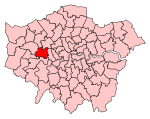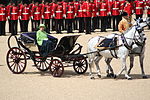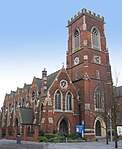Twyford Church of England Academies Trust
AC with 0 elementsAcademy trusts
Twyford Church of England Academies Trust is a multi-academy trust based in West London and affiliated to the London Diocesan Board for Schools. It currently consists of three academies in the London Borough of Ealing: Twyford Church of England High School, William Perkin Church of England High School and Ealing Fields High School. The trust received permission in October 2014 to open a fourth academy named Ada Lovelace Church of England High School. The trust, in partnership with the local authority, is the hub for the Ealing Teaching School Alliance (ETSA), an alliance of local schools.
Excerpt from the Wikipedia article Twyford Church of England Academies Trust (License: CC BY-SA 3.0, Authors).Twyford Church of England Academies Trust
Twyford Crescent, London Acton (London Borough of Ealing)
Geographical coordinates (GPS) Address Nearby Places Show on map
Geographical coordinates (GPS)
| Latitude | Longitude |
|---|---|
| N 51.5092 ° | E -0.2788 ° |
Address
The Elms Building
Twyford Crescent
W3 9RA London, Acton (London Borough of Ealing)
England, United Kingdom
Open on Google Maps





